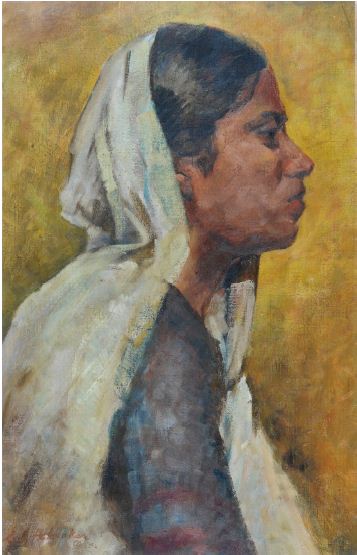![]() Modern & Contemporary Indian Art II
Modern & Contemporary Indian Art II
![]() Modern & Contemporary Indian Art II
G. S. HALDANKAR (1912 - 1981)
Modern & Contemporary Indian Art II
G. S. HALDANKAR (1912 - 1981)
CONTACT US
Catalogue & Viewing
Lot Closed
Accounts & Shipping
Lot Closed
-
Provenance
 Provenance
Provenance
Private Collection, Mumbai
-
Literature
 Literature
Literature

Gajanan Savlaram Haldankar achieved critical acclaim despite his work being overshadowed early in his career by the high achievements of his father S. L. Haldankar, the legendary artist and educator. Kalamaharishi S. L. Haldankar, as he was respectfully addressed, was both teacher and mentor to his son Gajanan. Having no formal training in fine art, Haldankar junior learnt the intricacies of painting portraits and landscapes in water colours and oils from his father. He however developed a personal style that suited his more bohemian outlook to life. He had a spiritual side to him and was much influenced by the lives of religious and philosophical figures like Jesus Christ and Swami Vivekananda.
Haldankar was much lauded for his portraiture and was commissioned to paint the likenesses of eminent personages like Mahatma Gandhi, Field Marshal General Manekshaw and other stalwarts in public and political platforms. 'Portrait of a Lady' is a very interesting work, the subject rendered in profile being radically different from the regular frontal arrangement, and bringing to mind the anthropological photo-documents the British made of ethnic types. The woman in the painting looks to be of working or peasant class, her face in repose but with a gentle frown, and her lips stained as though with betel. The paint is brushed on in rough confident strokes, with highlights on the hair, skin and fabric enhancing its texture and creating depth. Haldankar was able to bring the fluidity of watercolours to oil colours, exploring light and shadow to the best effect.
For more than sixty years Haldankar taught at the fine art institute his father founded in Mumbai (Haldankar's Fine Art Institute). His work was exhibited several times at the Bombay Art Society during his lifetime, and he won awards such as the President's Prize from the Society in 1929, the 1931 Silver Medal at the Mysore Dasara Exhibition Mysore, and the 1939-40 Gold Medal from the Academy of Fine Arts, Kolkata. He served on the panels of several judging committees and art institutions during his illustrious career.
